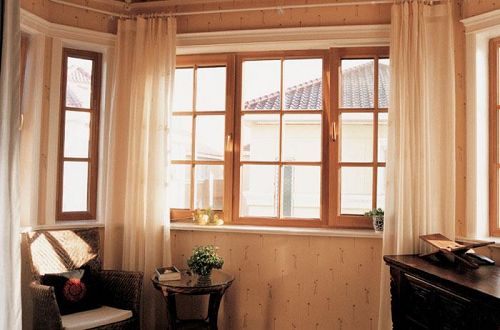Energy saving doors and windows provide a broad space for development
2019-05-20 08:03:08
 As far as China's typical enclosure components are concerned, the energy consumption of doors and windows accounts for 40%-50% of the total energy consumption of building enclosure components. According to statistics, under the conditions of heating or air conditioning, the loss of heat from single glasses in winter accounts for about 30%-50% of the heating load, and the amount of heat consumed by solar radiant heat transmitted through a single glass window in summer is about It accounts for 20%-30% of the air conditioning load. The heat loss of windows of buildings outside China is more than twice that of other similar buildings in Canada and other northern hemisphere countries. Enhancing the thermal insulation performance of doors and windows and reducing the energy consumption of doors and windows is an important part of improving the quality of indoor thermal environment and improving the energy efficiency of buildings.
As far as China's typical enclosure components are concerned, the energy consumption of doors and windows accounts for 40%-50% of the total energy consumption of building enclosure components. According to statistics, under the conditions of heating or air conditioning, the loss of heat from single glasses in winter accounts for about 30%-50% of the heating load, and the amount of heat consumed by solar radiant heat transmitted through a single glass window in summer is about It accounts for 20%-30% of the air conditioning load. The heat loss of windows of buildings outside China is more than twice that of other similar buildings in Canada and other northern hemisphere countries. Enhancing the thermal insulation performance of doors and windows and reducing the energy consumption of doors and windows is an important part of improving the quality of indoor thermal environment and improving the energy efficiency of buildings. Residential buildings are characterized by a large number of irregularities on the facades and complex body shapes. At present, residential buildings increase the lighting area or use large-opening windows and doors for daylighting and appearance, and the ratio of window to wall area increases, which is not conducive to building energy conservation. The energy efficiency standards of residential buildings comprehensively consider the building shape coefficient and window wall area ratio. Based on the analysis of energy consumption in cold regions and climate subregions of cold regions and considering the current maturity of energy-saving technologies, the limits of heat transfer coefficients of enclosure structures are determined.
In severe cold and cold regions, the loss of heat from indoor and outdoor heat transfer during the heating period dominates. Therefore, the heat transfer coefficient of the window (including the transparent part of the balcony door) is required to be high. The impact of the window on the energy consumption of the building mainly includes two aspects. One is that the heat transfer coefficient of the window affects the heating in winter and the indoor and outdoor temperature difference during summer air conditioning; the other is that the window is affected by solar radiation to cause indoor heat gain. In winter, the solar radiation that enters the room through the window is conducive to building energy efficiency. Therefore, reducing the heat transfer coefficient of the window to suppress temperature difference heat transfer is one of the main ways to reduce the window heat loss; in summer, the solar radiant heat that enters the room through the window becomes Air conditioning cooling load, therefore, reduce the solar radiation into the room and reduce the temperature difference between the window or transparent curtain wall heat transfer is a way to reduce air conditioning energy consumption.
In the process of energy saving and development of doors and windows, the glass used in the curtain walls of doors and windows, followed by float glass, heat absorbing glass, heat reflecting glass, Low-E glass with its unique optical properties, good thermal insulation properties and no reflection light pollution Environmental performance has become the fastest growing energy-saving glass in recent years. Over the past few years, Low-E glass production has increased significantly under the promotion of national building energy conservation policies. With the formulation and implementation of energy-saving design standards for residential buildings in cold and cold areas, the use of Low-E glass in residential buildings will be further promoted. Energy-saving work for residential buildings will inevitably contribute to the development of Low-E glass and other energy-saving glass. A broader space for development.
we produce ferro barium silicon 10000mt/year,we export the material to india,japan,korea,Russia,Europe,America ect.
specification:ba:30%min si:50%min Al:2%max C:1%max s:0.05%max P:0.05%max
ba:28%min si:50%min Al:2%max C:1%max s:0.05%max P:0.05%max
Silicon Barium 30/50,Ferro Silicon Barium,Silicon Calcium Barium,Silicon Barium Lump
Shizuishan Ketong Metallurgy Industry And Trade Co., Ltd. , http://www.ketongmetallurgy.com